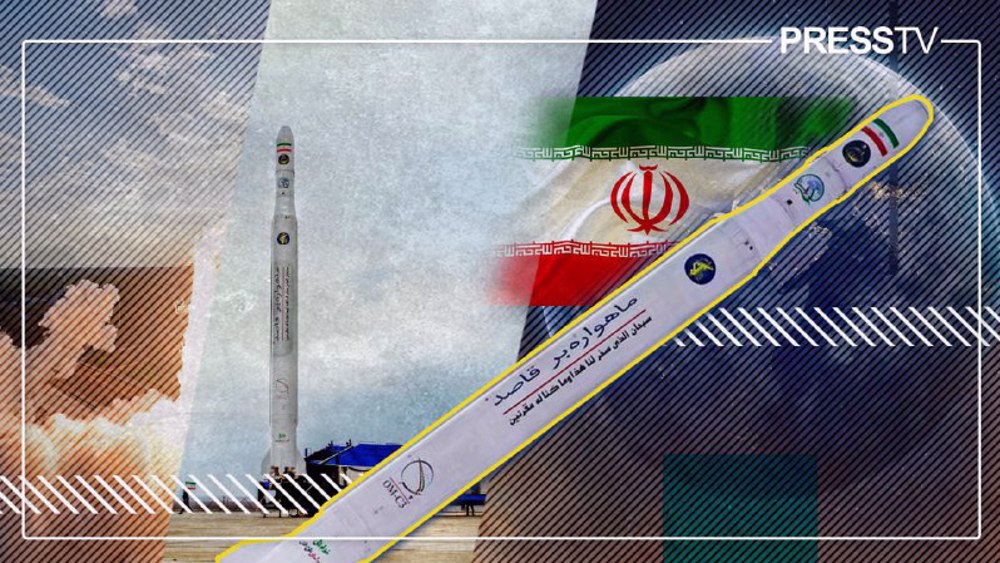By Ivan Kesic
Iran has successfully carried out a suborbital test using the Qased satellite carrier, aimed at evaluating cutting-edge technologies developed by the country’s space agency.
It will help in enhancing the capabilities of Iranian satellites, launch systems, and broader space infrastructure, according to experts.
This achievement marks another step forward in Iran’s pursuit of technological excellence, reinforcing its self-reliance and growing power.
The latest test of Qased carrier rocket is not only a routine demonstration of scientific and technological strength, but also a political message to the international community: Iran’s missile program remains intact, and its space program continues to make steady progress.
What is the Qased carrier rocket?
The Qased (also spelled Ghased, meaning “Messenger” in Persian) is a three-stage satellite launch vehicle (SLV) developed by the Islamic Revolution Guards Corps (IRGC) Aerospace Force.
It is designed to place small satellites—primarily for reconnaissance and imaging—into low Earth orbit (LEO), generally defined as an altitude between 160 and 2,000 km.
The Qased represents a significant element of Iran’s military-led space program, distinct from the civilian Iranian Space Agency (ISA). Unlike earlier launch vehicles that lift off from the Imam Khomeini Space Center, Qased is launched from the Shahrud Rocket Base, also located in central Semnan province.
The rocket’s first stage is liquid-fueled, likely derived from the Ghadr medium-range ballistic missile (MRBM). Using a proven liquid-fuel engine reduces developmental risks.
Its second and third stages are solid-fueled, employing the Salman upper stage—an advanced IRGC development. Solid-fuel technology enhances reliability and allows for quicker launch readiness compared to liquid-fueled systems.
Qased can carry small satellites, typically weighing 50–60 kg, into LEO. For instance, it successfully placed the Noor-1 satellite (a 6U cubesat) into a 426 x 444 km orbit with a 59.8-degree inclination.
Qased has reached altitudes of up to 450 km—well beyond the Safir SLV’s 250 km capacity—thanks to its advanced upper-stage propulsion.
It is launched from a Transporter Erector Launcher (TEL), indicating its mobility and flexibility, unlike the fixed launch pads used for ISA’s Safir and Simorgh rockets.
The IRGC’s newer Qaem-100 SLV, used in the September 2024 Chamran-1 launch (60 kg to 550 km), shares technological lineage with the Qased, though it is designed for higher altitudes and distinct payloads.
What are its launches so far?
Qased has a solid record, with three successful orbital launches (2020, 2022, and 2023) and the most recent suborbital test conducted on Monday.
Its use of a reliable liquid-fuel first stage and innovative solid-fuel upper stages has helped it avoid many of the pitfalls experienced by earlier SLVs like Safir and Simorgh.
- April 22, 2020: Qased’s maiden launch successfully placed Noor-1, Iran’s first official military satellite, into a 426 x 444 km orbit. The launch from the Shahrud site surprised analysts due to the previously undisclosed IRGC space capability and the effectiveness of its solid-fuel stages.
- March 8, 2022: The Qased launched Noor-2 into a higher orbit, demonstrating improved performance and operational reliability.
- September 27, 2023: Noor-3 was launched into a 450 km orbit, equipped with imaging and signal intelligence equipment, further showcasing Qased’s evolving capabilities.
What Is the significance of the latest test?
The latest test was conducted on July 21 to evaluate new technologies for its space program. While no satellite was launched into orbit, the test aimed to enhance spacecraft performance and advance system validation.
Suborbital flights reach outer space but do not complete a full orbit around Earth. Instead, they follow a parabolic trajectory, ascending into space and then descending back to Earth.
Although no official details have been released about the altitude achieved or specific test objectives, the trial likely involved validating multi-stage separation, inertial guidance systems, and upgrades to solid-fuel technology.
Conducted weeks after Israeli-US aggression against Iran, the test underscores the IRGC’s continued commitment to advancing its missile and space capabilities.
The Shahrud facility was previously targeted in Israeli airstrikes in October 2024 and again in June 2025, with exaggerated claims that Iran’s solid-fuel missile program had been crippled.
Iran’s retaliatory strikes on the occupied Palestinian territories, alongside its continued testing of satellite carriers, reveal that such claims are false.
Despite setbacks, Iran remains firmly on track in expanding its missile and space programs.
